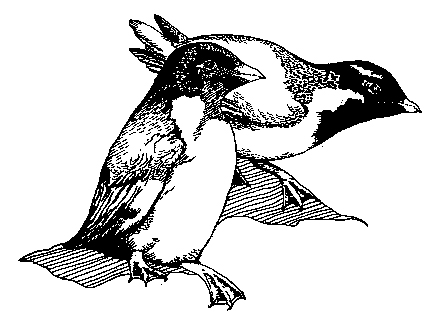|
| ||||||
Special | A | B | C | D | E | F | G | H | I | J | K | L | M | N | O
P | Q | R | S | T | U | V | W | X | Y | Z | ALL
Ancient Murrelet:
Qizangi{ - Synthliboramphus antiquus Qizangi{, salaayakucha{ aku{. Ala}um kugan slum aslaan hasinakuchal haang akus uku}azas. Sakucham quuhmliigii aku{ kamgii qaxchikdaku{, uyugan ilagaan atxulii akiita{ quhmaza{. Kitakix ama hiiyukaa ila{taa qaxchikdaza{. Slum aslaan tan}is kugan tanam sinigan huna{ agu{tal ilan saahmala}izas, hagumatakus cha}il igulgazaqas a{tazakus. Wayaam haqaya}azalaka}is. Saahmlangis kuuricham saahmlaa as txidix aagiikal hiila{tazas. Slum aslaan hasinanas agudix, qan'gim ngaan ixchil uku}aqadazas. Slum sangis akus mal, slum aslaan udang alanakuchaza}ulas. Agiichigaan kalu}talgal qalgazakus.
Ancient Murrelet - Synthliboramphus antiquus The ancient murrelet is a very small duck. It is seen in great numbers during the summers. The murrelet is a small grayish bird with a black head. It has white feathers from its throat to its belly. The bill and feet on a murrelet is black in color. During the summers, the ancient murrelets nest on islets in burrows they build for that purpose. In the past, the murrelets and eggs were gathered by hand just by grabbing them while they were nesting in their burrows. Today, this is not done like it was in the past. The eggs of ancient murrelets are large. The egg is approximately the size of a chicken's egg. During the summers, the ancient murrelets are plentiful, and when fall comes, they head back to where they came from. |



 At{am Sangis
At{am Sangis